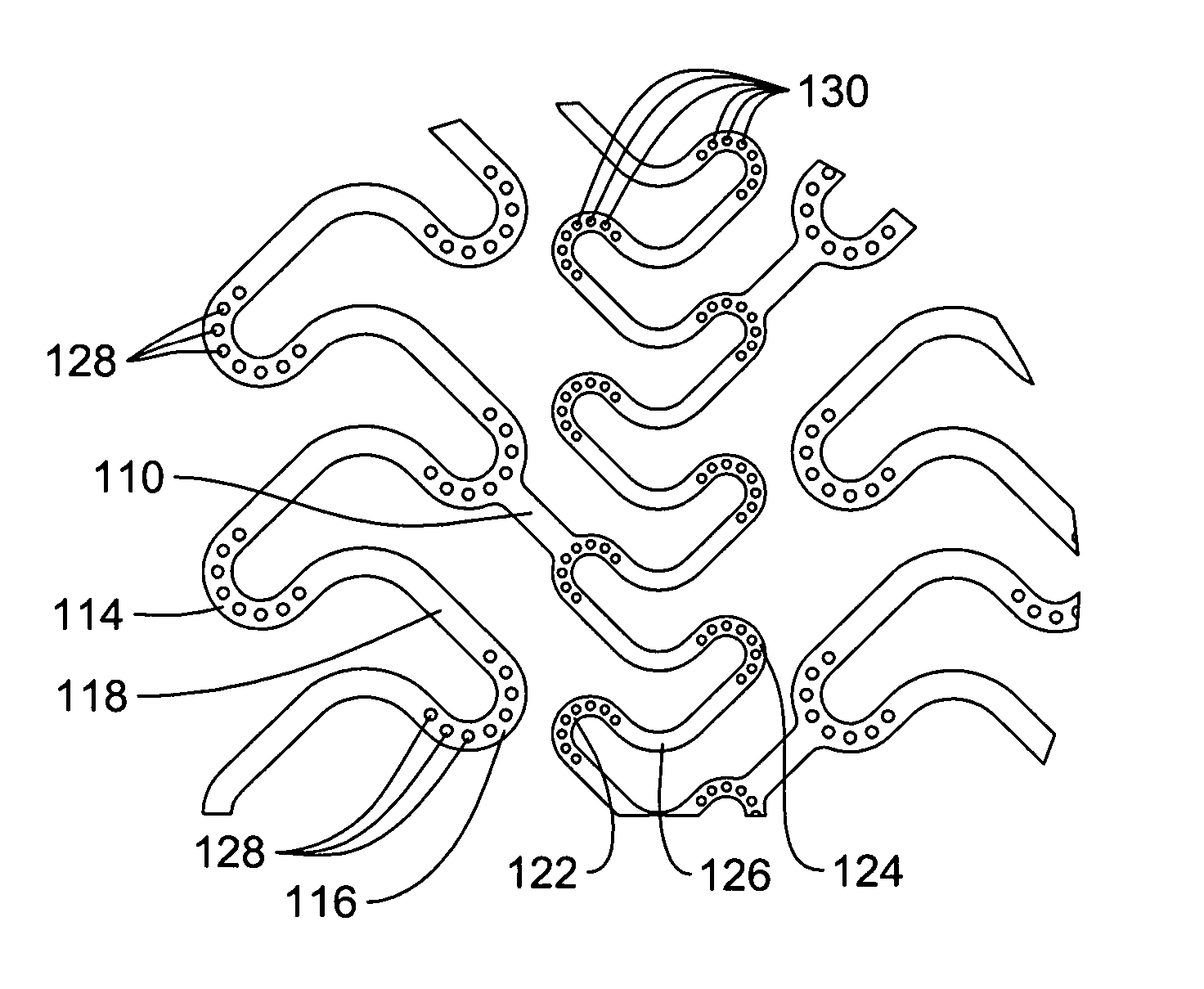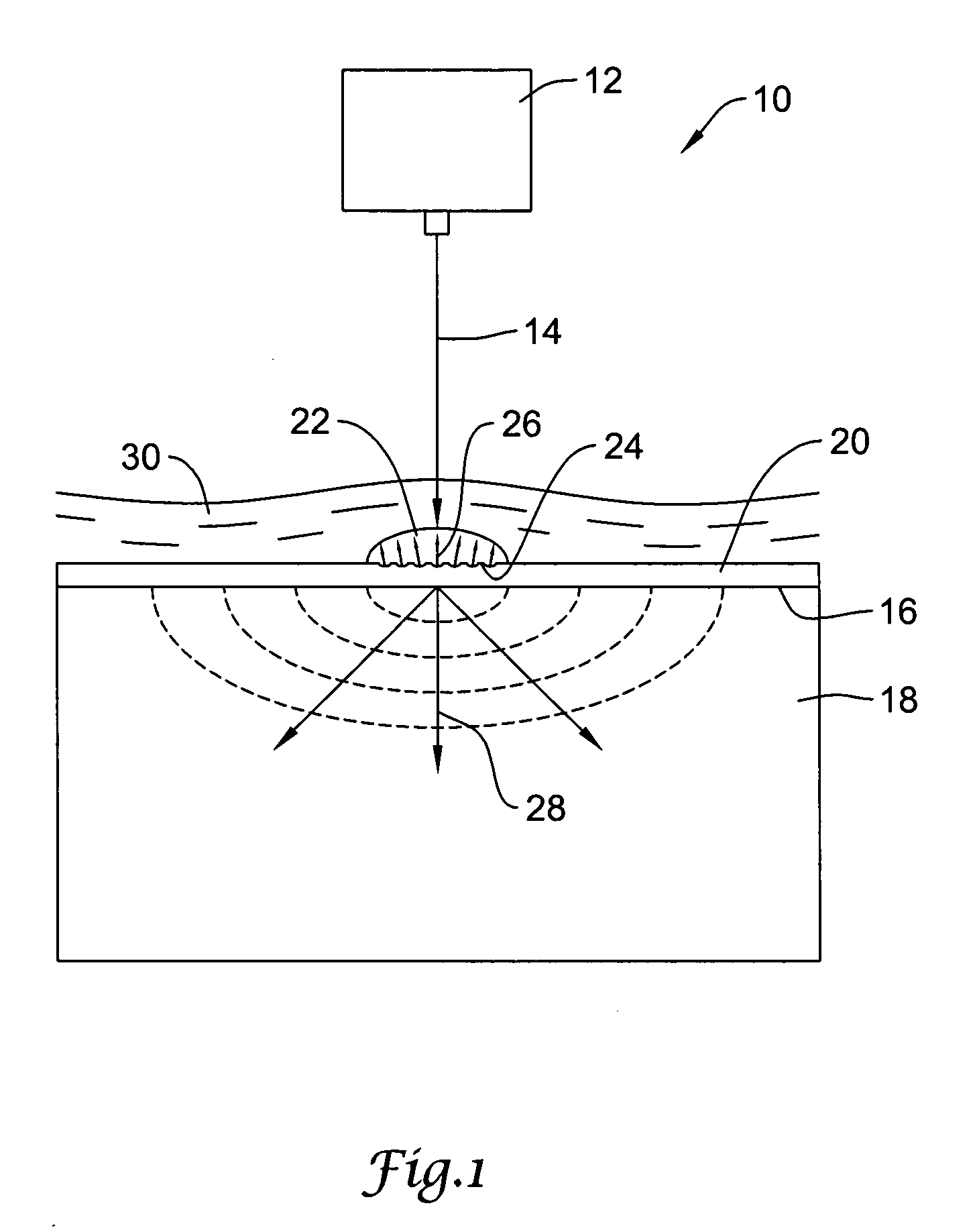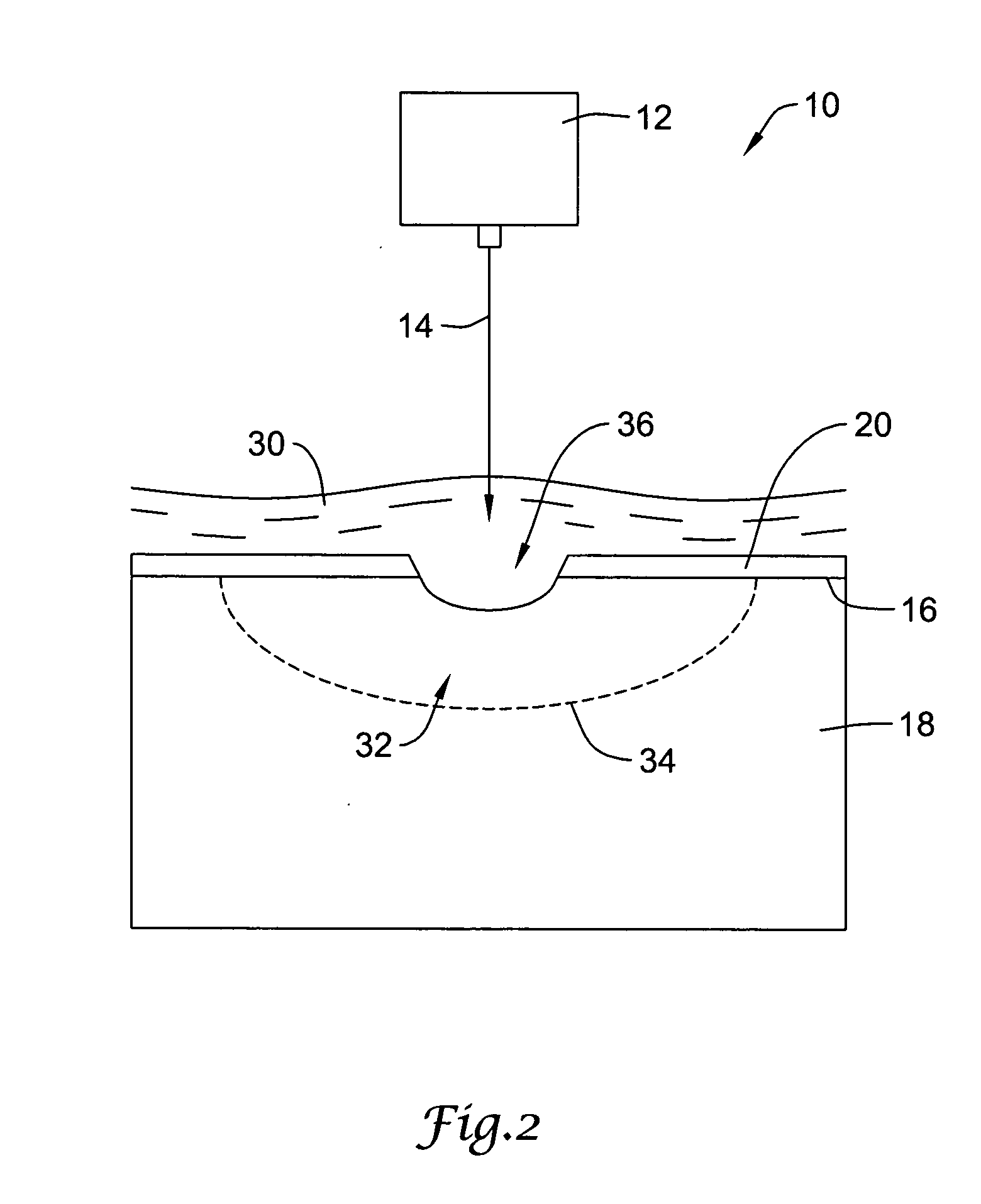Laser shock peening of medical devices
a technology of medical devices and shock peening, which is applied in the field of medical devices, can solve the problems of reducing the performance of the device, affecting the quality of the device, and the effectiveness of such processes is typically limited, and achieves the effects of less disruption to the bloodstream, increased flexibility and strength, and reduced device performan
- Summary
- Abstract
- Description
- Claims
- Application Information
AI Technical Summary
Benefits of technology
Problems solved by technology
Method used
Image
Examples
Embodiment Construction
[0029] The following description should be read with reference to the drawings, in which like elements in different drawings are numbered in like fashion. The drawings, which are not necessarily to scale, depict selected embodiments and are not intended to limit the scope of the invention. Although examples of construction, dimensions, and materials are illustrated for the various elements, those skilled in the art will recognize that many of the examples provided have suitable alternatives that may be utilized.
[0030]FIG. 1 is a diagrammatic view showing an illustrative laser shock peening process for use in producing a compressive residual stress region within a workpiece. The laser shock peening process, represented generally by reference number 10, includes a high-energy laser apparatus 12 configured to direct an intense laser beam 14 onto the target surface 16 of a metallic workpiece 18. The workpiece 18 may comprise one or more components of a stent, guidewire, catheter, intra...
PUM
| Property | Measurement | Unit |
|---|---|---|
| pressure | aaaaa | aaaaa |
| pressure | aaaaa | aaaaa |
| compressive residual stress | aaaaa | aaaaa |
Abstract
Description
Claims
Application Information
 Login to View More
Login to View More - R&D
- Intellectual Property
- Life Sciences
- Materials
- Tech Scout
- Unparalleled Data Quality
- Higher Quality Content
- 60% Fewer Hallucinations
Browse by: Latest US Patents, China's latest patents, Technical Efficacy Thesaurus, Application Domain, Technology Topic, Popular Technical Reports.
© 2025 PatSnap. All rights reserved.Legal|Privacy policy|Modern Slavery Act Transparency Statement|Sitemap|About US| Contact US: help@patsnap.com



